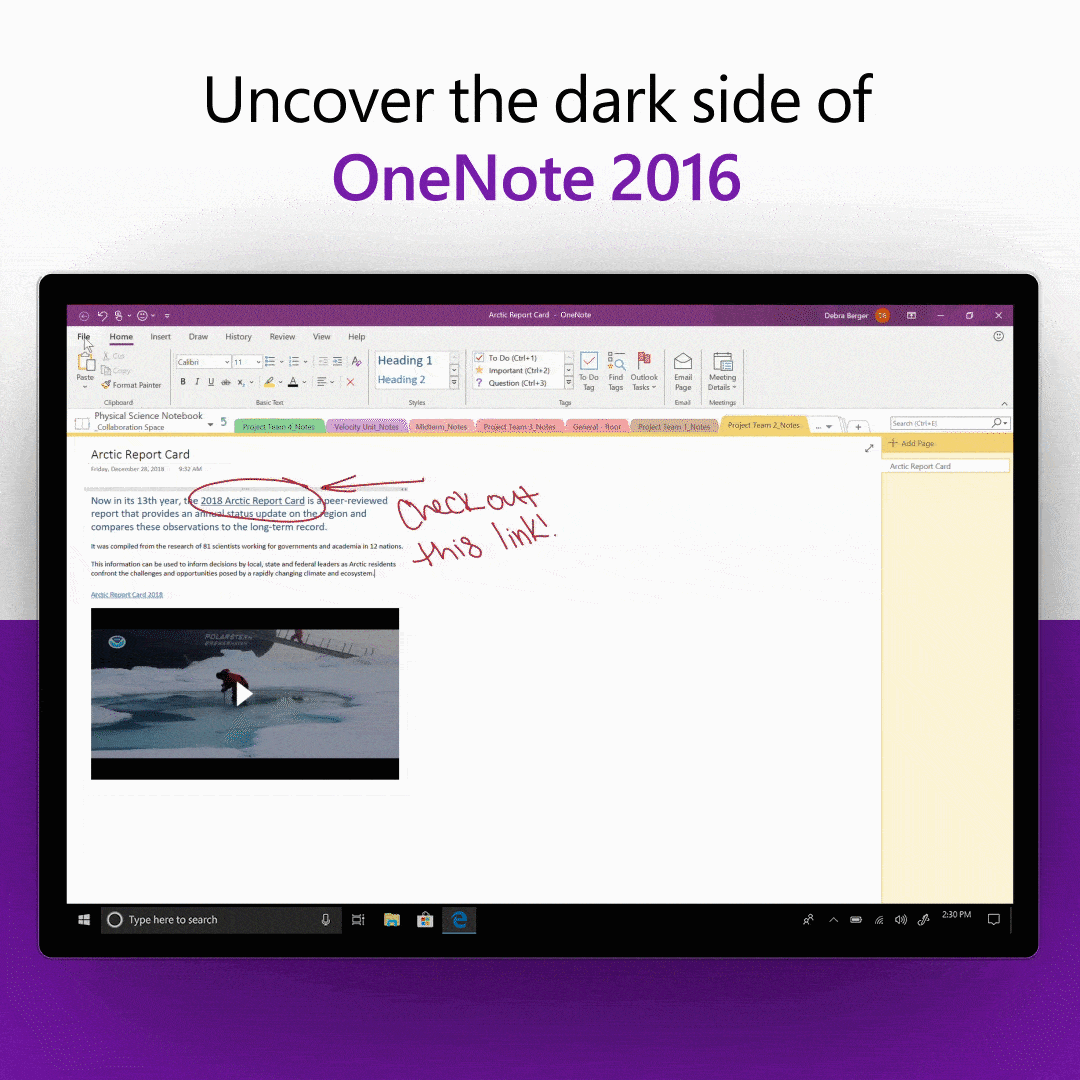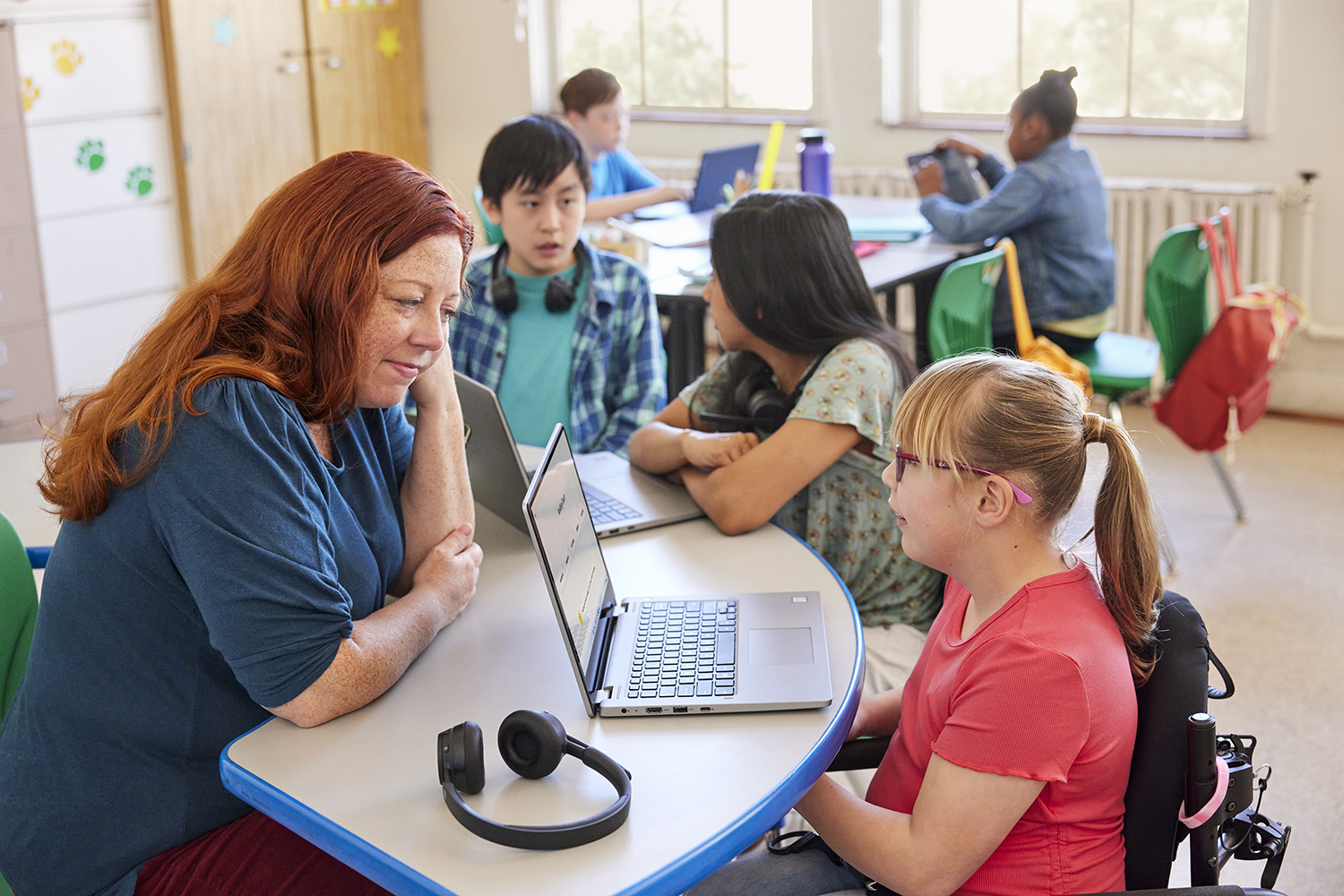There’s a good chance the students you’re teaching today will enroll in university courses that haven’t yet been created and enter jobs that don’t exist. And they’ll be called upon to solve some of the world’s most pressing environmental, social and economic issues. We know that can feel like a lot on your shoulders, but there is plenty you can do to prepare students for success and we’re here to help.
In this month’s What’s New In EDU, we’ll point you to free, high-quality STEM resources. Thoughtfully designed and well implemented STEM instruction builds subject-specific knowledge and fosters a growth mindset, collaboration, critical thinking and computational thinking – all vital skills for jobs of the future.
We have tips to share about fun ways to participate in Hour of Code, available in Minecraft: Education Edition as a free coding lesson. Use game-based learning to build digital skills, learn about artificial intelligence (AI), and help connect the classroom to careers.
Learn to code and explore AI in a new, free Minecraft Hour of Code lesson
Computer Science Education week is December 9-15, and schools around the world will be organizing an Hour of Code. Plan an Hour of Code for your school or classroom using Minecraft Hour of Code, a new coding lesson in the game-based learning platform that students know and love.
As Maina Gachugu, who teaches fifth- and sixth-grade students at George T. Daniel Elementary School in Kent, Washington explains in the video above, Minecraft makes coding highly accessible for students. He’s used the platform before and plans to use it this year during Hour of Code. He says he’s excited to use Minecraft during Hour of Code because it takes away any intimidation students might feel when it comes to coding.
The new Minecraft Hour of Code lesson teaches students coding with MakeCode, and introduces the basics of Artificial Intelligence (AI). The lesson is based on a real-world example of AI used for forest conservation, inspired by a Microsoft AI for Earth project. Students will write code to prevent forest fires and save a village in an immersive Minecraft world.
The lesson is available to anyone on Windows, macOS, or iPad as a login-free demo, so you don’t have to worry about having a subscription to try it. Just download the app straight from the Minecraft: Education Edition website. If you are licensed through Office 365, you can sign in with your school account. Minecraft Hour of Code is available in 20 languages at: aka.ms/minecrafthourofcode.

We also are updating and improving the library in Minecraft: Education Edition. Now hundreds of lessons, worlds, build challenges, and tutorials are available in-game via the Library menu. Lessons are categorized by subject to make it easier to find and load content, and you won’t have to leave the game. If you navigate to the Computer Science lessons, you’ll see the Hour of Code lesson ready to play!
And remember our You can in :90 video series is always a great place to go for quick, how-to advice on getting started with Microsoft Education Tools, including using Minecraft: Education Edition and Code Builder.
New STEM Partnership
With technology driving a massive shift in the workforce, it’s estimated that 85 million jobs worldwide will go unfilled by 2030 due to a skills gap. As part of our effort to tackle the problem, we partner with educators like you and organizations like Micro:bit, NASA, Code.org, and others, who see STEM and digital skills development as an empowering pathway in our evolving, digital world.
Today, we’re thrilled to share that we’re gaining new partners in this effort and are joining the Discovery Education STEM Careers Coalition, which is bringing industry leaders together with schools to help educators teach STEM effectively and help students envision and prepare for STEM careers.
We’ll work with our coalition partners to provide classrooms, particularly those in underserved communities, with free, high-quality STEM resources. These materials will be aligned to rigorous educational standards and mapped to career pathways across industries. We hope to reach 10 million students within the first five years.
As part of this collaboration, we will be integrating Microsoft resources like Teams and Flipgrid into Discovery Education resources.
Additional resources: Microsoft MakeCode
Computer Science is a new subject for many teachers. And it’s important to remember that sometimes it’s about learning with your students, as Ann Wieland, a third-grade teacher at Lafayette Elementary School in Seattle shows us in this month’s episode of What’s New in EDU. She explains that she hasn’t had a lot of experience leading digital lessons, which makes it especially inspiring to see how much fun she and her students have coding using lessons from the Microsoft MakeCode for micro:bit curriculum. Want to give it a try? Check out some short Microsoft MakeCode tutorials you can do for Hour of Code here.
Learning Tools
In addition to all this exciting news around STEM instruction, we have plenty to share with you when it comes to Microsoft Education tools that can save you time, help you personalize instruction, and create more inclusive and accessible learning environments. Let’s start with Learning Tools, free tools that support reading, writing, math and communications. They are available in the products you use every day in the classroom, and we have updates that we think you’ll love.
We have begun rolling out parts of speech and picture dictionary for Arabic in the Immersive Reader. And we’ve integrated Immersive Reader with some new partners, including Canvas by Instructure, a cloud-based learning management system, and Nearpod, a student-engagement platform. If you use those popular education resources, you’ll love them even more with this integration.
To support student writing globally, we have new language support for Office Dictation (speech-to-text) and PowerPoint captioning and live translation. Specifically, Norwegian is rolling out in public preview for Word, OneNote and PowerPoint web, and Outlook Desktop. Dictation will be rolling out in public preview for Danish, Dutch, Finnish and Swedish soon.
Office 365 Education
In Office 365 news, we will soon be rolling out voice recording and transcription in Word for the web. We’ve heard you say you spend a lot of time recording audio on your phone, from class discussions to professional learning sessions, and then transcribing those audio files into Word. With this change, you’ll be able to record and upload your audio, and Word will display a written transcription in a side panel. You can then easily bring relevant snippets or the entire transcript into a document to edit.

Natural language query in Excel. Plenty of people know the power of Excel for organizing data, whether that’s for looking at student outcomes or analyzing scientific data, for example. But formulas can be intimidating. With our new, natural language query, currently available through Microsoft Office Insider, you don’t have to know how to write a formula to gain insights from your data. The new feature uses the intelligence that powers Ideas in Excel. So, all you do is type a question in the query box, and Ideas will provide answers supported by formulas, charts, or pivot tables.
For quick tutorials on how you can use free Office 365 resources in the classroom, check out the latest season of the You can in :90 video series.
Also check out this blog from the recent Microsoft Ignite Conference to learn about AI-related innovations within Microsoft 365, the cloud-powered productivity service.
More on OneNote
We’ve heard you say how well Microsoft OneNote works in your classrooms and schools and, in response to your feedback, we’re going to continue mainstream support for OneNote 2016. Teachers and students who love OneNote 2016 can keep using it and expect to see new features. For example, we’re rolling out a new feature for OneNote 2016, Dark Mode. It changes the app’s interface elements from light to dark. Using OneNote in this mode can improve readability in low-light environments, provide greater contrast, and reduce eye strain. Read more about this announcement!

We’ve created a custom OneNote Class Notebook wizard that delivers the CS Discoveries computer science curriculum created by the nonprofit Code.org. Geared towards 6th-10th graders, the curriculum empowers students to create apps, games, and web pages and engage with computer science in ways that foster creativity and problem solving.
With the Code.org Class Notebook, I now have an online textbook, workbook, and notebook for my coding students. Thanks Microsoft and Code.org for putting this together.
Eileen Lennon, an educator from New York City.

To learn more about how to create your own Code.org Class Notebook, visit our recent blog.
Global TweetMeet
We’ll be talking more about future-ready skills and computer science during a global TweetMeet on Tuesday, November 19 at 10 a.m. PST. We love hearing from you, so please join us at @MicrosoftEDU and follow our tweets through the hashtag #MSFTEduChat. To get the full details and all you need to prepare, visit the blog post here.
Hands-on with Minecraft Earth at Microsoft Stores
This holiday season starting November 15, play the exclusive Minecraft Earth augmented reality build and get prizes for your participation at Microsoft Store. Plus, you can invite your students to connect with others on Minecraft Mondays, where Minecraft fans can participate in mini-games, build new challenges, and other creative activities only at Microsoft Store.
For IT Decision Makers
We have some news about Intune Education, which allows school IT leaders to deploy and manage classroom devices and apps from a web console in just a few steps. School IT administrators will now be able to manage Windows Autopilot in Intune for Education. Windows Autopilot is a cloud-based provisioning technology that provides a streamlined device setup process with little IT intervention required.
From the Intune for Education portal, you’ll be able to:
- Configure Autopilot deployment profiles.
- Create dynamic groups for Autopilot-registered devices based on group tags.
- Monitor and review device deployments.
Windows Device Spotlight
Windows 10 helps deliver personalized learning for every student with devices built for the classroom and beyond. Find the right device for your school today, starting at $199 for notebooks and $299 for 2-in-1 laptops with touch and Windows Ink. This month, we’re spotlighting the Acer TravelMate Spin B118-RN, a rugged and versatile 2-in-1 for students. Tap into your student’s creative potential with the power of Windows 10 Ink and the TravelMate B118-RN’s crystal-clear Full-HD 11.6” display. With all-day battery and weighing in at just 3.4 lbs, the TravelMate B118-RN is a fantastic tool for fostering excellence in education.

Key takeaways
High-quality STEM instruction is essential for students to be successful in school and the workforce, and to close the growing global skills gap. But as an educator, the burden of delivering great STEM instruction doesn’t fall to you alone. We’re here to support you with free, high-quality resources. A few things we’d especially love you to keep in mind this month:
- STEM instruction doesn’t have to cost a lot. We have plenty of free tools with built-in training.
- Great teaching sometimes means learning alongside your students.
- We all have a role to play in helping students develop future-ready skills, and partnerships are critical.
- Computer Science Education Week is just a month away. Start planning now.
We love hearing from you. Let us know what updates you’d like to see and how we can partner with you further. Share your feedback with us on Twitter by tagging @MicrosoftEDU!









